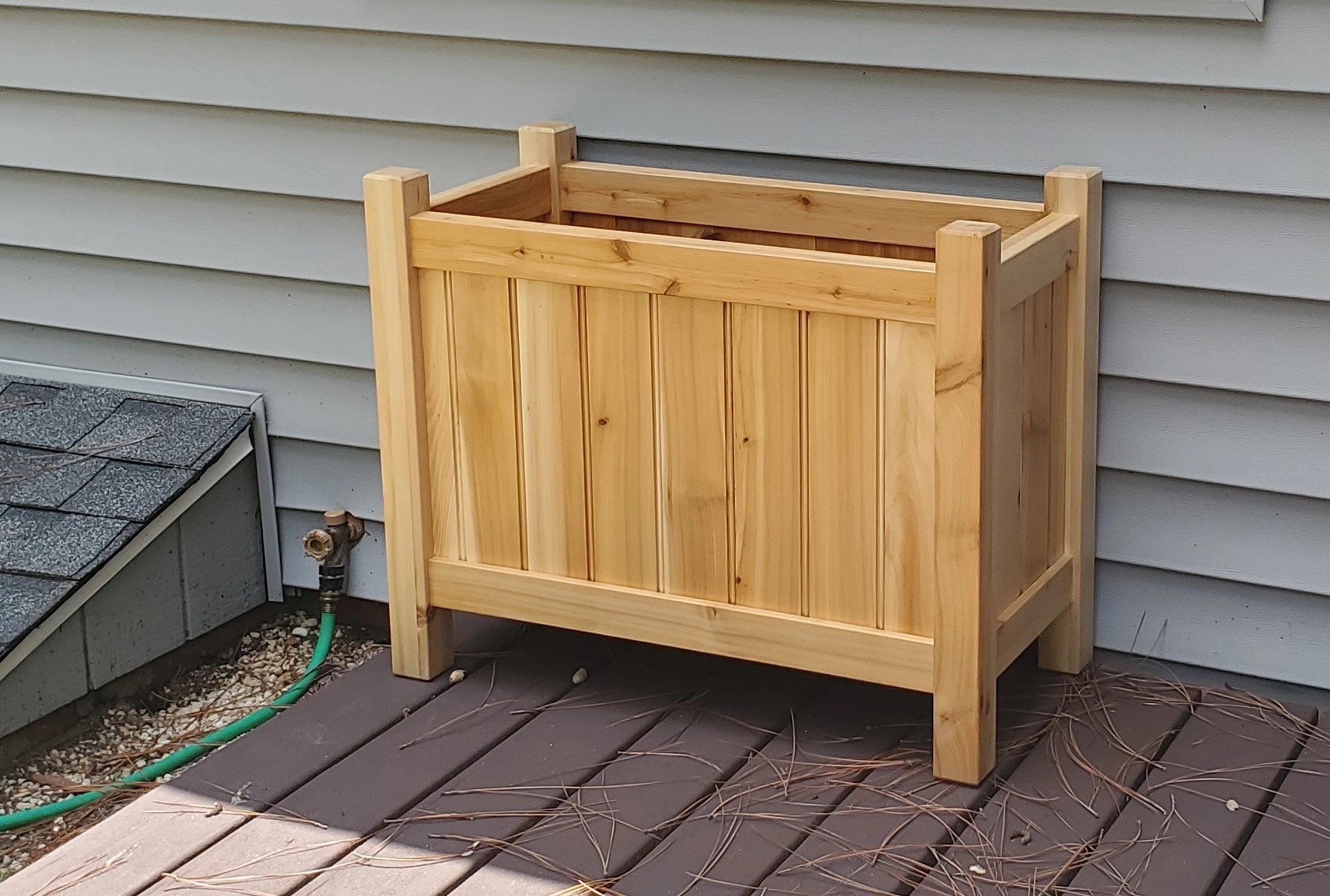

It’s a work provided device. It was either that or Windows, so it was really the only option. I might try out some tiling options for it, not sure how upset IT will be about that though…


It’s a work provided device. It was either that or Windows, so it was really the only option. I might try out some tiling options for it, not sure how upset IT will be about that though…
It’s also incredibly useful as a failsafe in a helper method where you need the argument to be a string but someone might pass in something that is sort of a string. Lets you be a little more flexible in how your method gets called


Couldn’t you use painter’s tape? Unless your glue joint is thin, it won’t matter if some of the oil seeps past the tape. Pre-finishing is way easier than finishing after final assembly.


I spent years using i3 as my main machine and I loved everything about it. Fast forward to now where I have to use a Mac. Most of the time I’m in a terminal with tmux so it’s fine but any time I have to deal with a gui element that is under something else I get more and more upset.


I’ve had buttons stop working. The mechanism inside that registers the click is a mechanical switch and they eventually die
If you can somehow manage to install software on your work laptop then I highly recommend Synergy. It is by far a better solution than a KVM and you could keep the keyboard and mouse plugged into your PC so no effect on gaming.
Generally you plug a cable in from the UPS to the server and install software that monitors the UPS. You would set up that software to power down the server.


Either dia or inkscape


If it were me I would give it a shot and use a thermal camera to see the temperature differences. Worse case you have to patch the hole. Might also be a good idea to contact an HVAC company to see what they think.


Promtail is for collecting metrics from log files, Loki is for log aggregation. Really depends on what your needs are. Do you want to be able to view the actual log entries or do you only want to see metrics about the logs?

Why would you back up data you don’t care about? I agree, it does seem pointless.


Traditionally all incoming lines into a server room or wiring closet gets punched down to a panel in the rack and then jumpers are wired to everything in the rack. You never put an end on a cable that came out of a wall. The idea being you would have maybe 5 feet of extra cable in a loop behind the rack in case you needed to reorganize the room in the future. It sucks pulling cable, so leave some extra.
If there were multiple racks then usually one of them was just for wires and switches and the others were for servers. I usually used different color cables for different things too (like use orange for links between switches and blue for servers, etc), but for a home rack I wouldn’t bother with that. Different color zip ties on cables can be handy too.


Is there any way to configure Cloudflare to send an additional header with the original IP in it? Then you could run fail2ban on that data.

What is the “action” attribute for the login form? My guess is the url doesn’t match and that the form isn’t using the origin header properly.


If it were me and I was intending to automate this I would probably do the following. Set up each test distro as a VirtualBox image and take a snapshot so I could easily roll back. Then I would write a script for each distro that downloaded the package, installed and launched the app. I would then probably query the window system to make sure the gui showed up, wait a period of time if I had to and take a screenshot.
This can probably all be done as a set of bash scripts.
This happens literally all the time for me both personally and professionally. I see mostly low effort attempts across various ports or things like sweeps of common username/password attempts on ssh or common management endpoints on http.
This is why it’s important to keep all publicly accessible servers and services updated and follow standard security guidelines. Things like only using public key auth for ssh for instance.
At work we get hit occasionally in large bursts and have to ban ips for a bit to get them to go away.


I would suggest upgrading the CPU (and motherboard) to something newer like a recent i5. That should reduce your power usage by a decent amount
If your plan is to switch to self hosting then I assume you have the ability to design and build the site. If that is the case then something like Linode or Digitalocean server would be perfect. It would make the eventual transition easier.
As for hardware, that depends on the expected amount of traffic and what your site has on it. If you’re only getting something like 5 requests per second and your site is mostly like text with some images then a raspberry pi running Linux is more than enough. If the expected amount of traffic is more or maybe you’re also serving videos with a lot of images then you will need more.
Honestly I would personally never self host a public website. Between things like DoS, random hacking attempts and just natural traffic spikes, there is a lot to consider and build out as far as security and hardware. I would stick to cloud but in the very least use the cloud for now to judge your hardware needs for the future.
A lot of this is personal preference but I will suggest the following strategy. Mount all of your drives into subfolders of /mnt or /media (/mnt is usually used for more permanent storage but either is fine). Then symlink various folders on the system to this mount point. Like maybe you want your home folder downloads on one of these drives so /home/spawnsalot/Downloads is symlinkef to /mnt/drive1/Downloads.
This lets you pick and choose various places across your system that are actually on the additional drives but also the ability to see everything on the drives in one place.
Game installation location completely depends on the game itself. Some might install to /usr/bin, others to /opt, etc. You might have to dig around a little after install, move the folder, then symlink it like nothing ever happened.